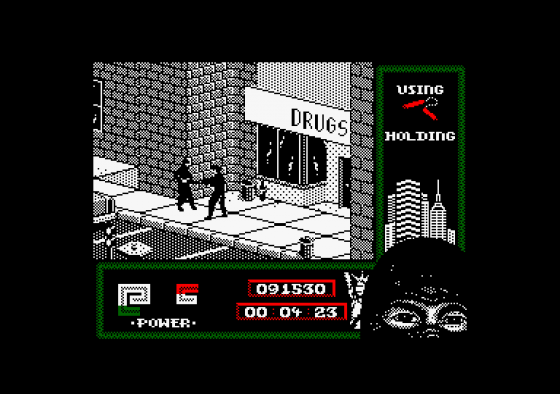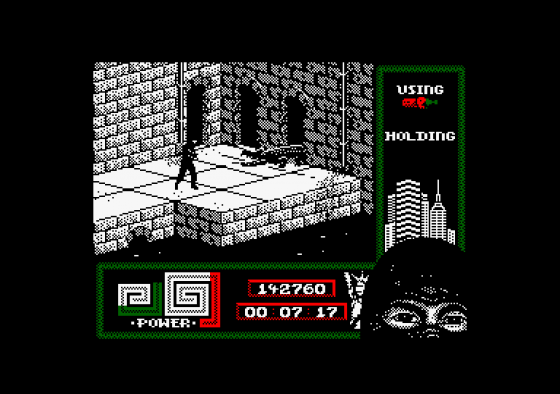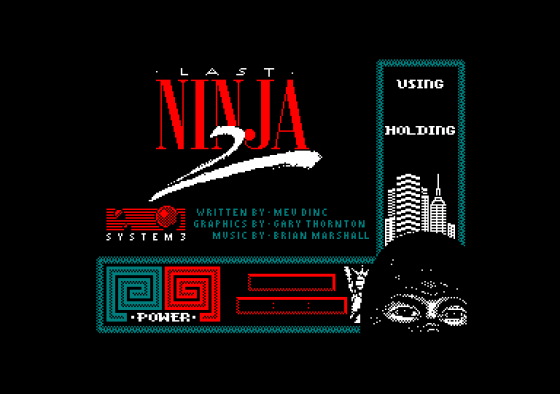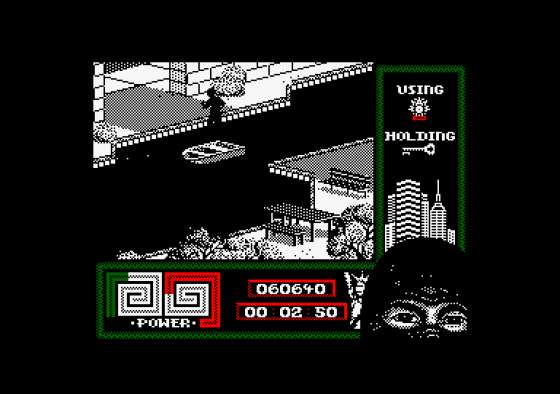
Future Publishing
 17th August 2008
17th August 2008
Categories: Review: Software
Publisher: System 3
Machine: Amstrad CPC464
Published in Amstrad Action 118
Over-rated game of 1988 or did the it match the hype? The gaming public bought it in droves and it went straight to the top of the Gallup charts, becoming one of the best selling games of the time. What did we think? Read on...
Last Ninja 2
Developed and published by System 3, the original Last Ninja was released in 1987 for the Commodore 64, becoming a huge hit: with its instinctive isometric landscape level design and complex action/puzzle gameplay. Plans were made to make versions for the Amstrad CPC and Spectrum, but these were panned as the time and resources needed to complete them were not available. Inevitably, as is the way with successful games, a sequel was made in 1988 and released for all major 8-bit computers.
Just looking at the packaging and all the coverage the game was receiving at the time I spent an absolute fortune (£12.99). Well it was in those days for a cassette game. I remember the hype surrounding this game (I should do I bought into it) and upon opening the package my excitement grew. The game came in the old box packaging of yesteryear and included the game cassette, an map illustration of the locations, and the ninja handbook (instructions). The deluxe box, which was also released, had a ninja mask and shuriken.
The protagonist of The Last Ninja series is Armakuni: the sole survivor of a ninjutsu clan that was destroyed by Kunitoki, an evil shogun. Following his defeat in the first game, Kunitoki manages to transport himself to modern day New York City.

Last Ninja 2 is divided into self-contained locations: Central Park, The Streets, The Sewers, The Basement, The Office, The Mansion and the Final Battle. Each level represented in that characteristic static isometric display. By 8-bit standards the graphics are very detailed, although the CPC version suffers from a lazy Speccy port.
While there is sufficient fighting for a ninja game the main backbone is exploration and puzzle-solving. Movement is achieved using a combination of joystick and keyboard. Some map screens contain opponents which you can avoid or fight while other screens contained puzzles or obstacles. Knife-wielding thugs, evil ninjas and even the local police join in on giving you a good kicking when you least expect it. You start with only your fists and feet for fighting but with patience and exploration you can soon acquire weapons to fight back with. The actual gameplay is where the game fails, for me anyway. Fights with the enemy consist of hitting back and forth until one flops to the ground, and sometimes it is much better, or safer, just to run away rather than waste time and energy fighting.
Some map screens have scenery which you can get lost behind and this can be made worse if an opponent jumps you and all you can do is flap away on the joystick helplessly and watch your energy decrease and decrease until you die. It doesn't help the CPC version that it is all black and white; black on black is hard to see. Also precision-jumping and fighting in isometric 3D is frustratingly near impossible.

Despite these flaws, it was one of the biggest-selling games of the time and regarded as a classic. Me, I was never duped by hype ever again and was thankful of the blessing in disguise that Last Ninja III never made it to the CPC. The third game received a lukewarm reception when it was released on the C64 and Amiga in 1991.
Last Ninja Remix
Last Ninja Remix was released for the major computer formats in 1990. This is basically a remake of Last Ninja 2 with an intro tacked onto the front. Admittedly the 'colour' intro is impressive but looks out of place considering the monochrome graphics of the main game. As for the game itself; the only difference that I can see is that the status screen to the right and bottom has been tweaked.
First Day Target Score
Try and play for ten minutes.
Verdict

Graphics 53%
P. Monochrome Speccy port.
Sound 17%
N. Do you hear that? (No) That's because there are no sounds to hear.
Grab Factor 69%
P. The hype alone might grab you...
Staying Power 44%
N. ...but the frustrating gameplay may mean giving up early on.
Overall 47%
A potentially great game bogged down in its own design and presentation.





